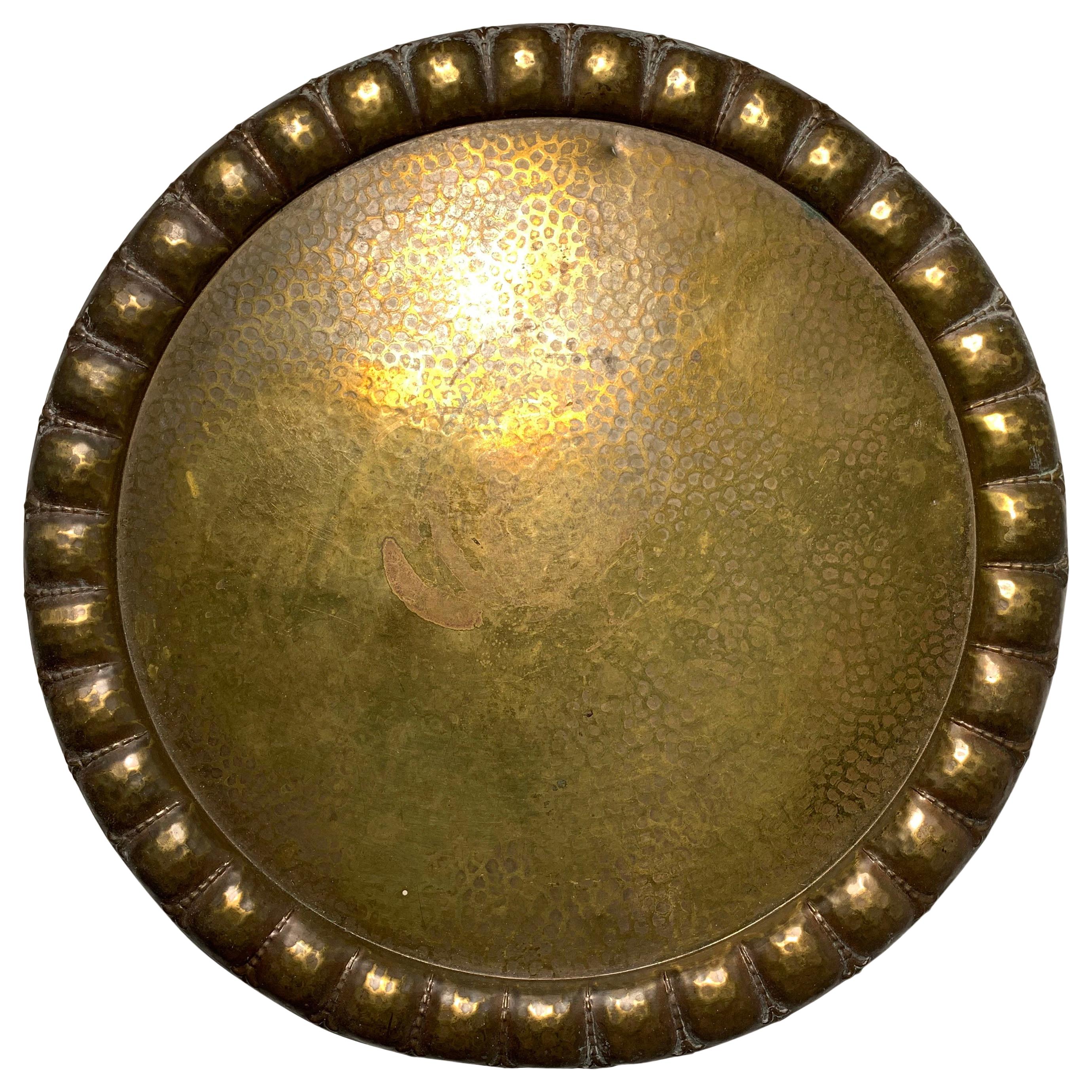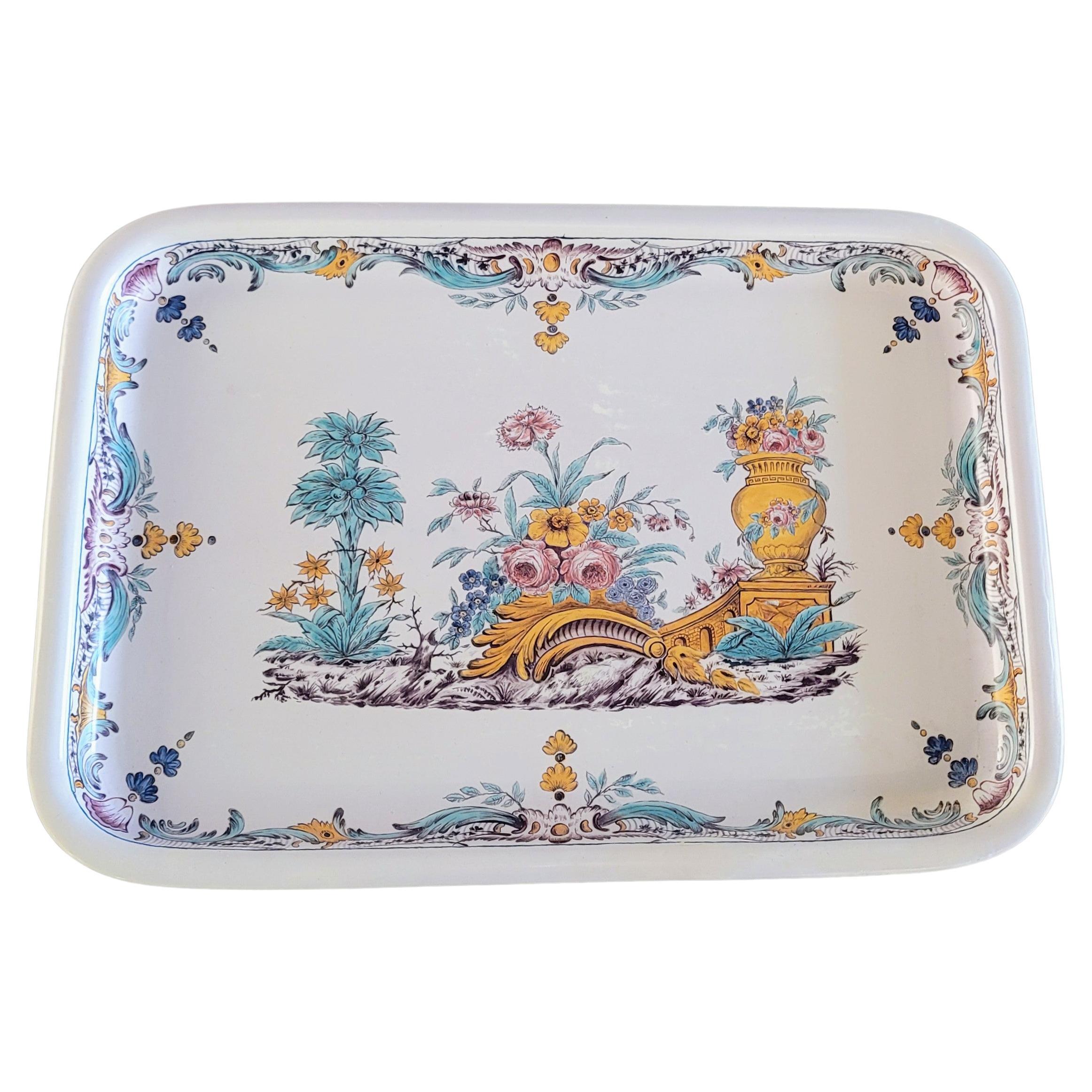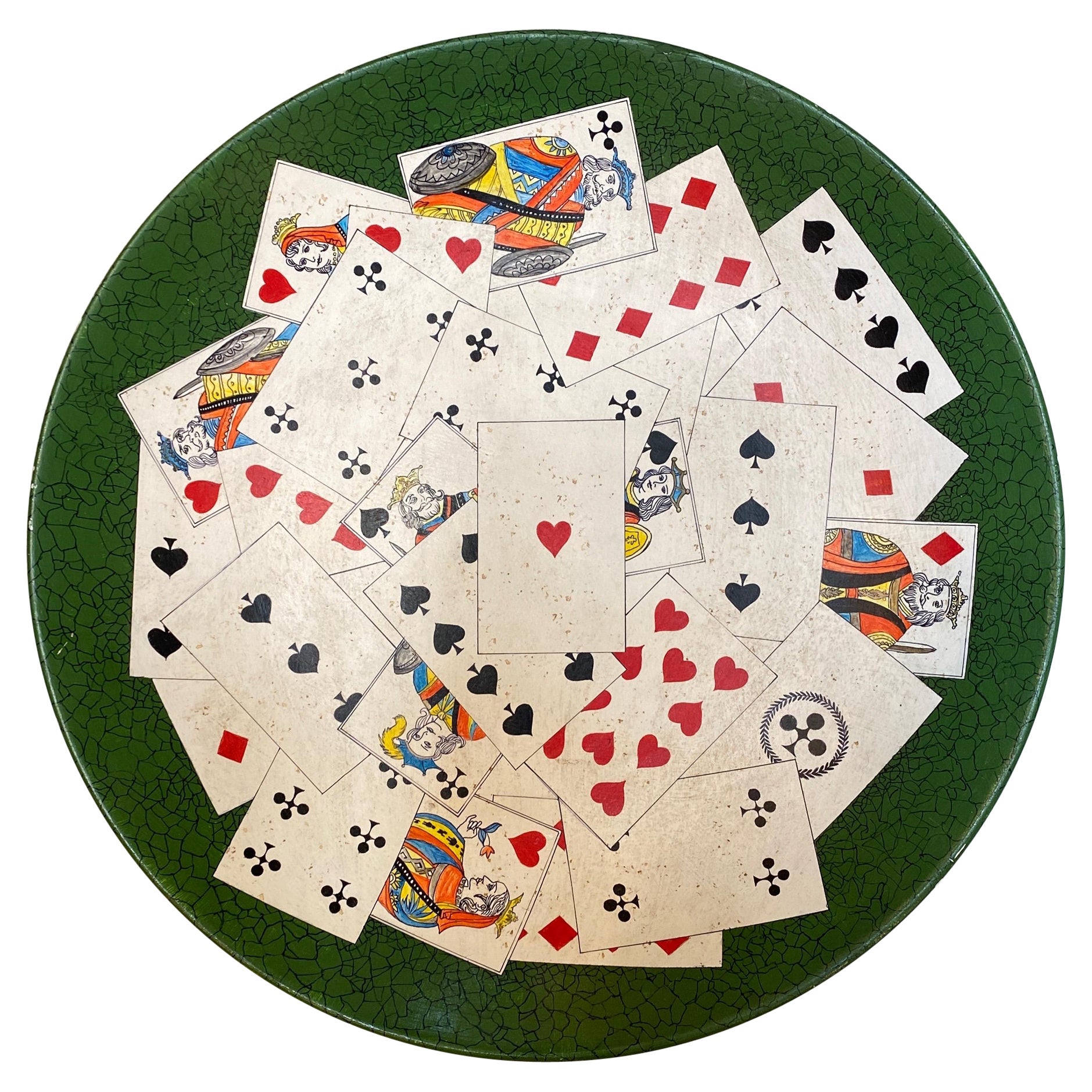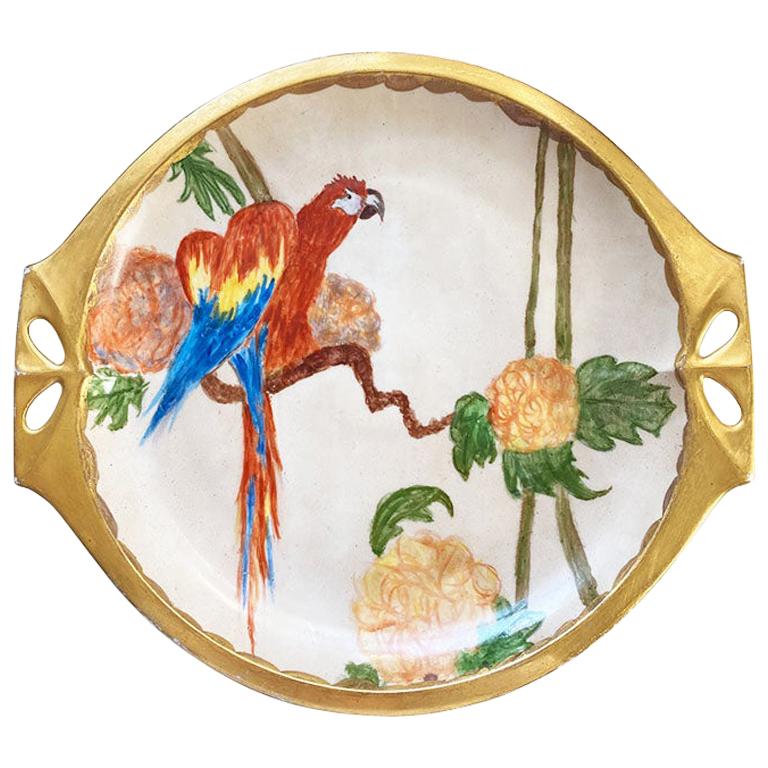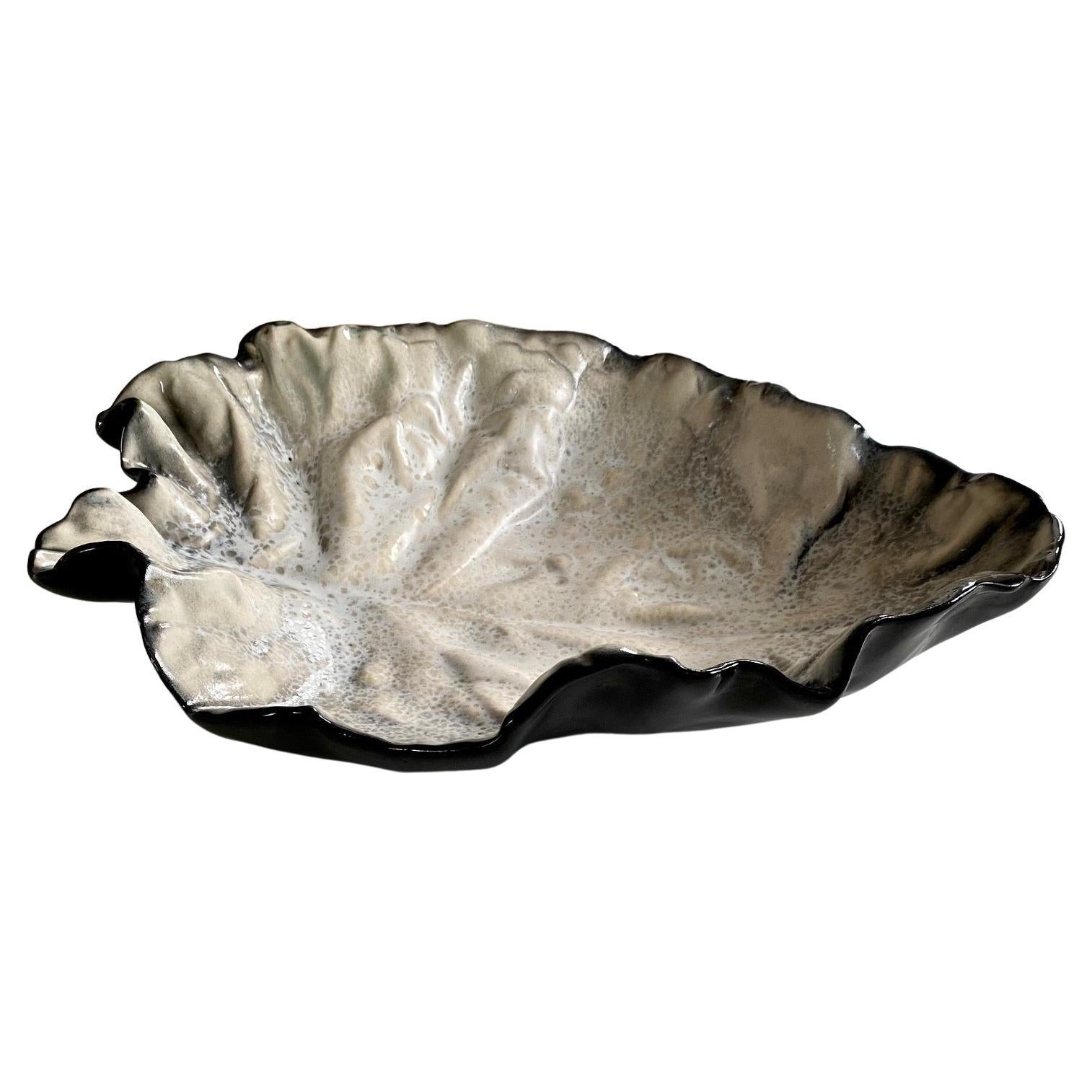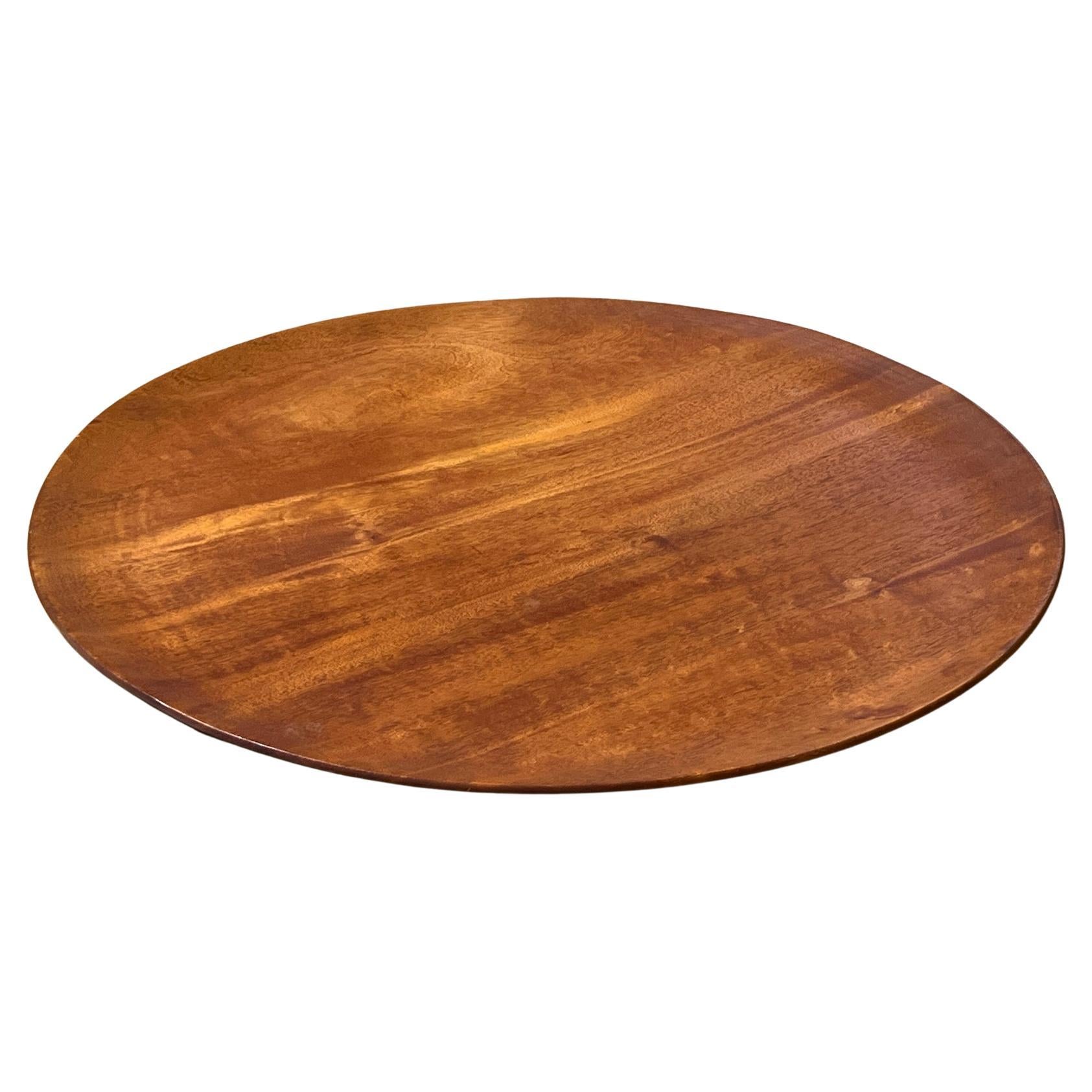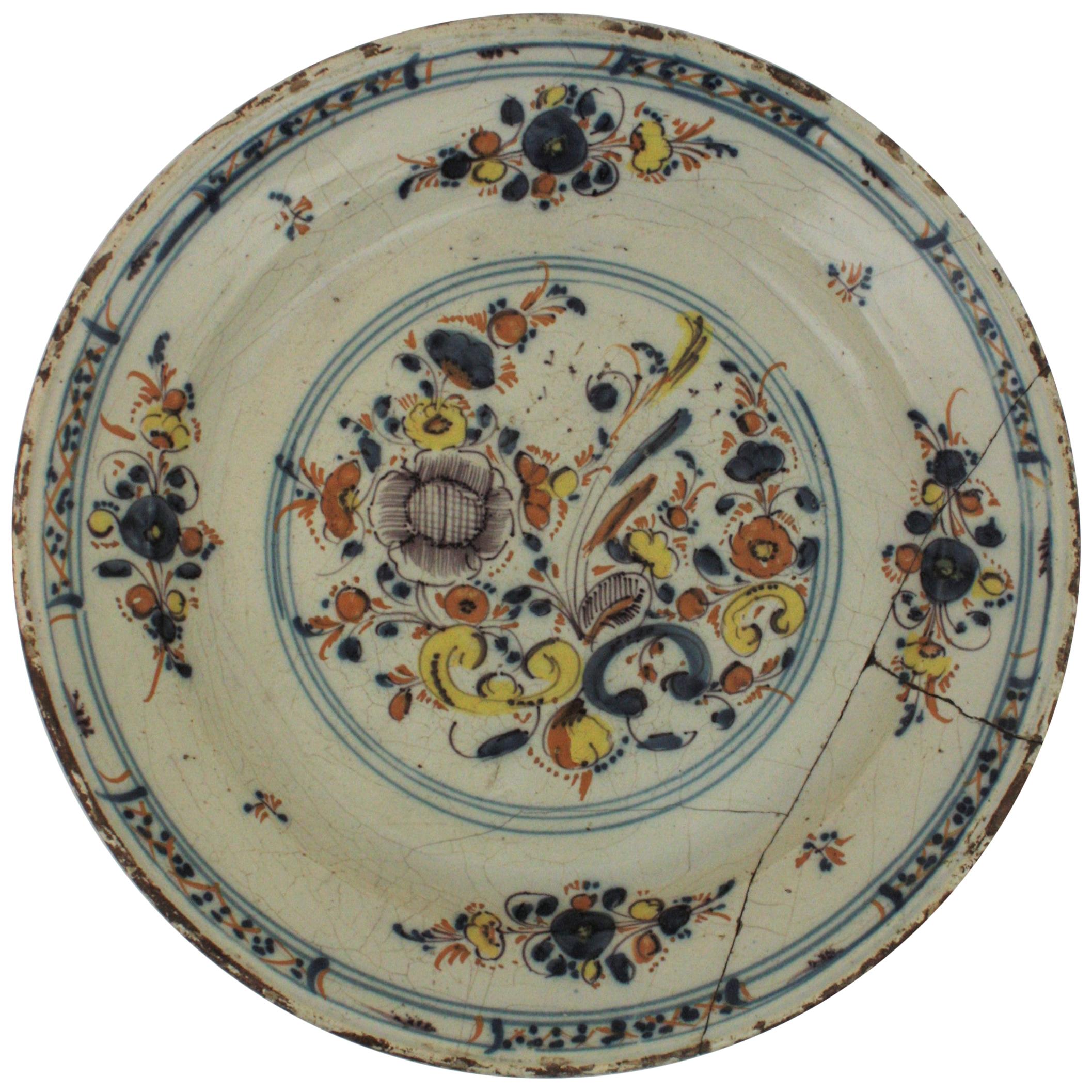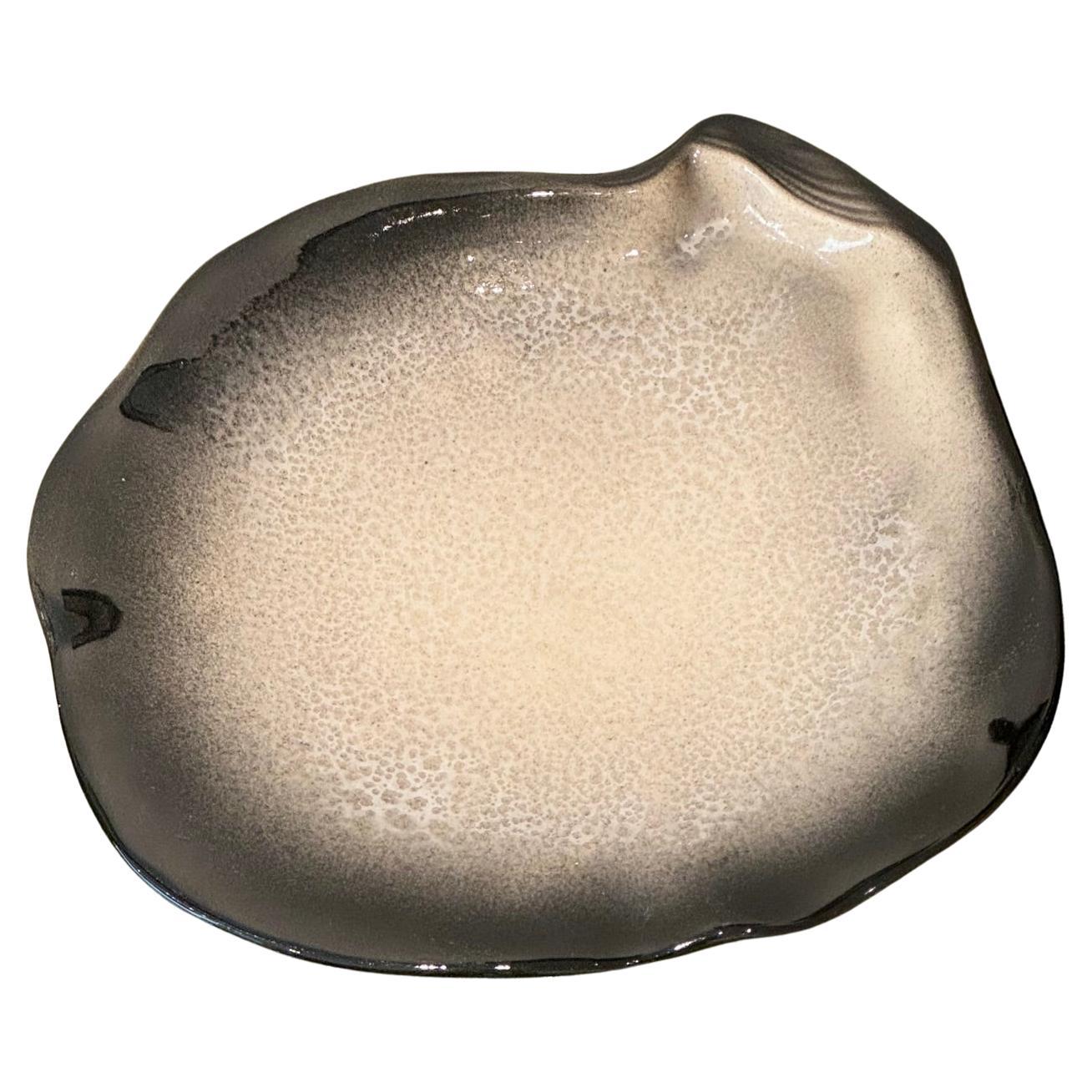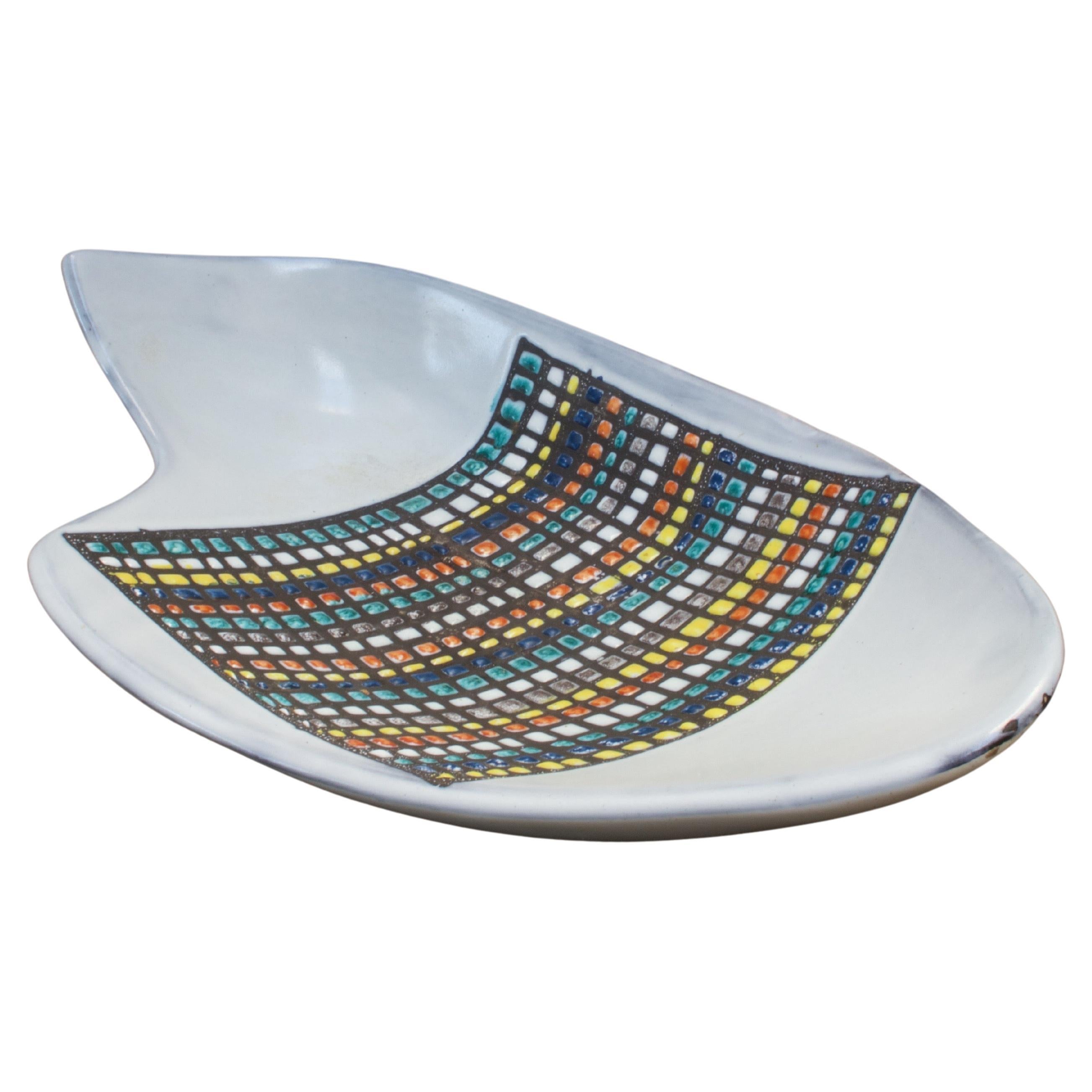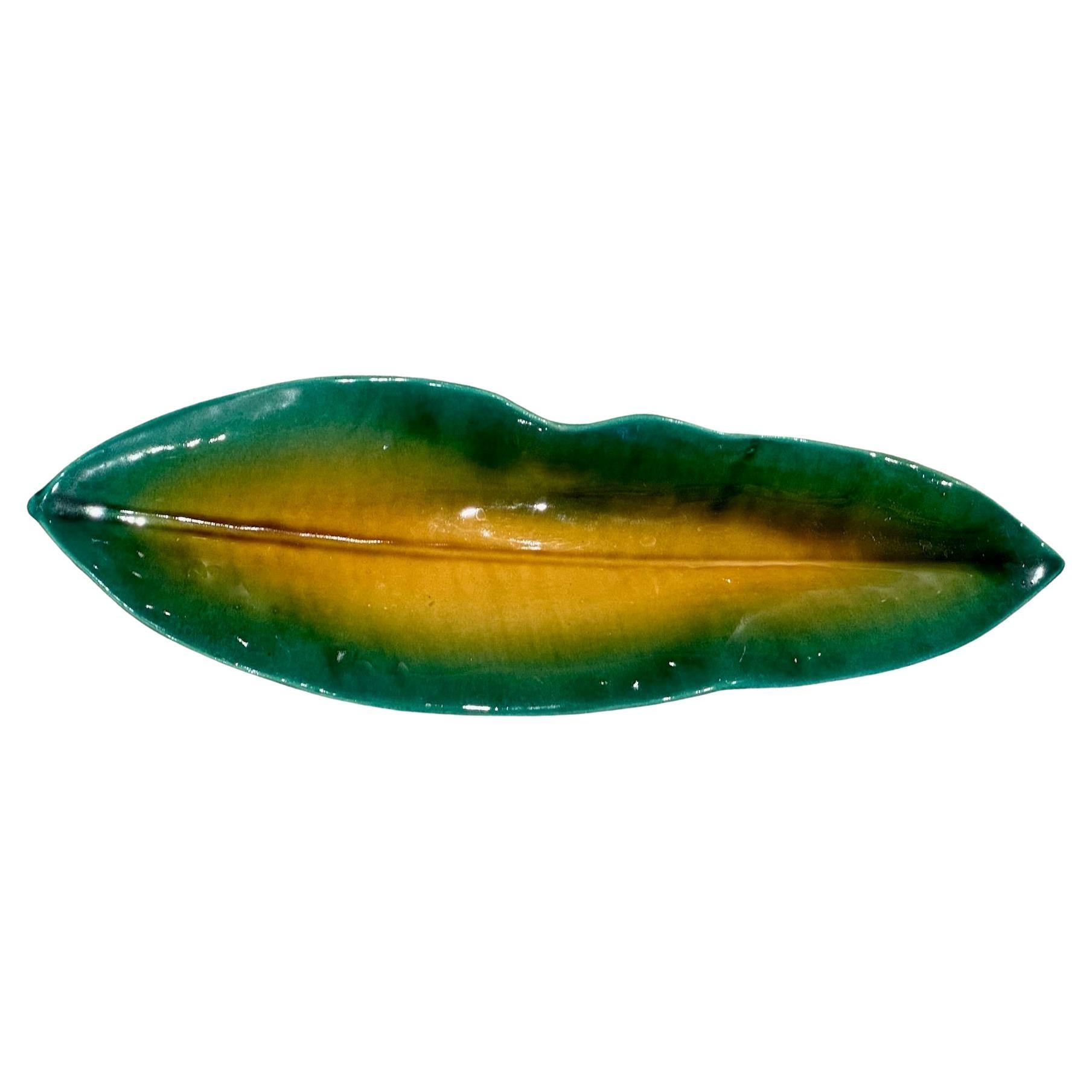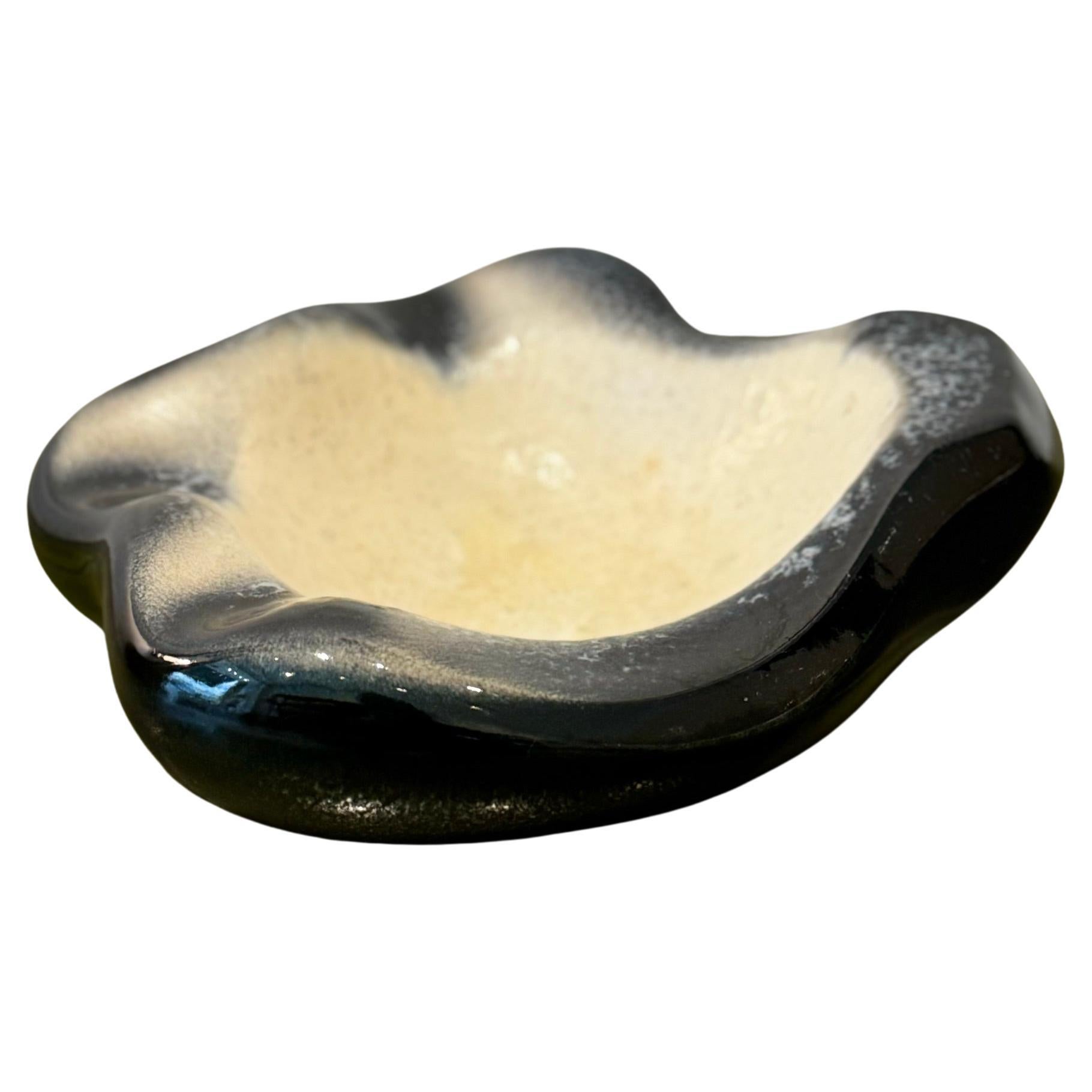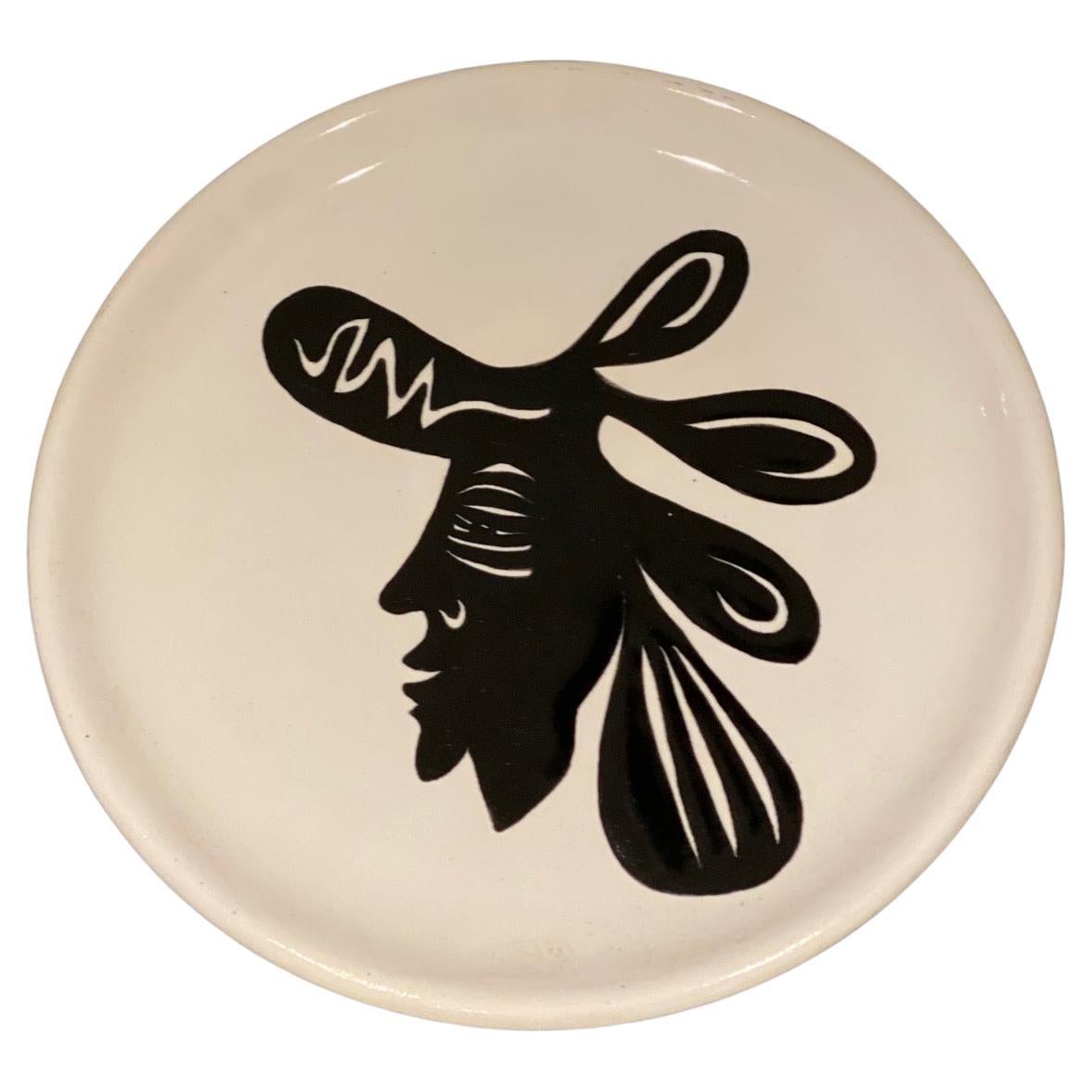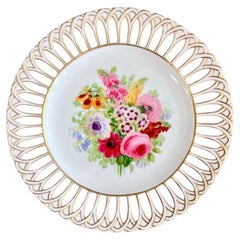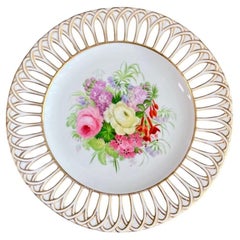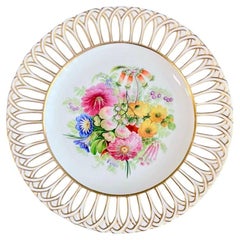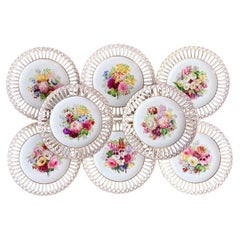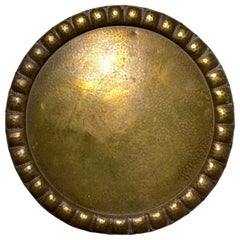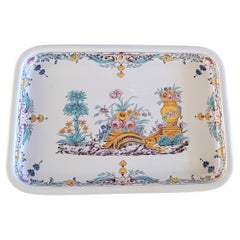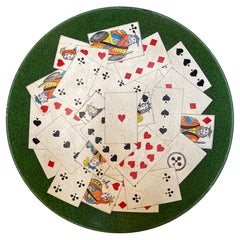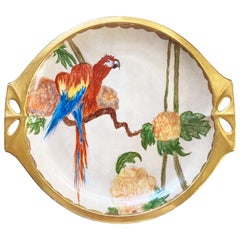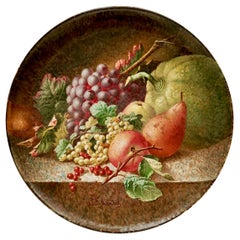
Large Copeland Charger Painted and Signed by C F Hurten, 1890
View Similar Items
Want more images or videos?
Request additional images or videos from the seller
1 of 16
Large Copeland Charger Painted and Signed by C F Hurten, 1890
About the Item
- Creator:Charles Ferdinand Hürten (Artist),Copeland (Maker)
- Dimensions:Height: 1 in (2.54 cm)Diameter: 16.25 in (41.28 cm)Length: 1 in (2.54 cm)
- Style:Late Victorian (Of the Period)
- Materials and Techniques:
- Place of Origin:
- Period:
- Date of Manufacture:1890
- Condition:No damage or repairs, just some light wear on the edges.
- Seller Location:London, GB
- Reference Number:Seller: LT-SPO021stDibs: LU4805115749052
About the Seller
5.0
Gold Seller
Premium sellers maintaining a 4.3+ rating and 24-hour response times
Established in 2016
1stDibs seller since 2019
224 sales on 1stDibs
Typical response time: 3 hours
Authenticity Guarantee
In the unlikely event there’s an issue with an item’s authenticity, contact us within 1 year for a full refund. DetailsMoney-Back Guarantee
If your item is not as described, is damaged in transit, or does not arrive, contact us within 7 days for a full refund. Details24-Hour Cancellation
You have a 24-hour grace period in which to reconsider your purchase, with no questions asked.Vetted Professional Sellers
Our world-class sellers must adhere to strict standards for service and quality, maintaining the integrity of our listings.Price-Match Guarantee
If you find that a seller listed the same item for a lower price elsewhere, we’ll match it.Trusted Global Delivery
Our best-in-class carrier network provides specialized shipping options worldwide, including custom delivery.More From This Seller
View AllCopeland Plate, Reticulated, Sublime Flowers by Greatbatch, 1848 (3)
By Copeland
Located in London, GB
This is a beautiful plate made by Copeland in 1848. It is decorated with a sublimely painted flower arrangement by the artist Greatbatch.
We have two sets of 8 of these plates available, as well as a few more separate ones; please see separate listings.
The Copeland factory was the third iteration of the famous Spode factory, after the "Copeland & Garrett" period which transitioned into the "Copeland" period in about 1833. The Spode/Copeland factory was one of the most prominent potteries right from the start of English porcelain production in the late 1700s to the demise of the industry in the 1960s and ultimate closure in the early 21st Century. In fact it was the founder Josiah Spode who was responsible for the recipe for bone china that made English china production so successful in the two centuries to come. Throughout all the changes, their items have always remained of exceptionally high quality and many of the designs have become iconic.
This plate was potted in fine white bone china, the rim meticulously reticulated in the "Gothic" shape. Reticulation was very time consuming and difficult, and just this detail would have made this plate expensive. The sublimely painted flower arrangement painted in the centre were done by Greatbatch, one of the well-known floral artists working for Copeland. Greatbatch was active between 1845 and 1860, and worked together with his brother R. Greatbatch, who was a talented gilder. They exhibited at the Great Exhibition of 1851.
This plate would have belonged to a sublimely expensive dessert service. It is stamped with the small blue Copeland mark with interlocking C's, and painted in red with the pattern number 7913, dating it at the year 1848.
Documentation: A plate of this service is shown on page 80 of Steven Smith's "Spode & Copeland: Over Two Hundred Years of Fine China and...
Category
Antique 1840s English Victorian Dinner Plates
Materials
Porcelain
Copeland Plate, Reticulated with Sublime Flowers by Greatbatch, 1848 (2)
By Copeland
Located in London, GB
This is a beautiful plate made by Copeland in 1848. It is decorated with a sublimely painted flower arrangement by the artist Greatbatch.
We have two sets of 8 of these plates available, as well as a few more separate ones; please see separate listings.
The Copeland factory was the third iteration of the famous Spode factory, after the "Copeland & Garrett" period which transitioned into the "Copeland" period in about 1833. The Spode/Copeland factory was one of the most prominent potteries right from the start of English porcelain production in the late 1700s to the demise of the industry in the 1960s and ultimate closure in the early 21st Century. In fact it was the founder Josiah Spode who was responsible for the recipe for bone china that made English china production so successful in the two centuries to come. Throughout all the changes, their items have always remained of exceptionally high quality and many of the designs have become iconic.
This plate was potted in fine white bone china, the rim meticulously reticulated in the "Gothic" shape. Reticulation was very time consuming and difficult, and just this detail would have made this plate expensive. The sublimely painted flower arrangement painted in the centre were done by Greatbatch, one of the well-known floral artists working for Copeland. Greatbatch was active between 1845 and 1860, and worked together with his brother R. Greatbatch, who was a talented gilder. They exhibited at the Great Exhibition of 1851.
This plate would have belonged to a sublimely expensive dessert service. It is stamped with the small blue Copeland mark with interlocking C's, and painted in red with the pattern number 7913, dating it at the year 1848.
Documentation: A plate of this service is shown on page 80 of Steven Smith's "Spode & Copeland: Over Two Hundred Years of Fine China and...
Category
Antique 1840s English Victorian Dinner Plates
Materials
Porcelain
Copeland dessert Plate, Reticulated, Sublime Flowers by Greatbatch, 1848 (1)
By Copeland
Located in London, GB
This is a beautiful plate made by Copeland in 1848. It is decorated with a sublimely painted flower arrangement by the artist Greatbatch.
We have two sets of 8 of these plates available, as well as a few more separate ones; please see separate listings.
The Copeland factory was the third iteration of the famous Spode factory, after the "Copeland & Garrett" period which transitioned into the "Copeland" period in about 1833. The Spode/Copeland factory was one of the most prominent potteries right from the start of English porcelain production in the late 1700s to the demise of the industry in the 1960s and ultimate closure in the early 21st Century. In fact it was the founder Josiah Spode who was responsible for the recipe for bone china that made English china production so successful in the two centuries to come. Throughout all the changes, their items have always remained of exceptionally high quality and many of the designs have become iconic.
This plate was potted in fine white bone china, the rim meticulously reticulated in the "Gothic" shape. Reticulation was very time consuming and difficult, and just this detail would have made this plate expensive. The sublimely painted flower arrangement painted in the centre were done by Greatbatch, one of the well-known floral artists working for Copeland. Greatbatch was active between 1845 and 1860, and worked together with his brother R. Greatbatch, who was a talented gilder. They exhibited at the Great Exhibition of 1851.
This plate would have belonged to a sublimely expensive dessert service. It is stamped with the small blue Copeland mark with interlocking C's, and painted in red with the pattern number 7913, dating it at the year 1848.
Documentation: A plate of this service is shown on page 80 of Steven Smith's "Spode & Copeland: Over Two Hundred Years of Fine China and...
Category
Antique 1840s English Victorian Dinner Plates
Materials
Porcelain
Set of 8 Plates by Copeland, Reticulated, Sublime Flowers by Greatbatch, 1848
By Copeland
Located in London, GB
This is a stunning set of 8 reticulated plates made by Copeland in 1848. Each plate is decorated with a unique sublimely painted flower arrangement by the artist Greatbatch.
We have a second set of 8 of these plates available, as well as a few separate ones; please see separate listings.
The Copeland factory was the third iteration of the famous Spode factory, after the "Copeland & Garrett" period which transitioned into the "Copeland" period in about 1833. The Spode/Copeland factory was one of the most prominent potteries right from the start of English porcelain production in the late 1700s to the demise of the industry in the 1960s and ultimate closure in the early 21st Century. In fact it was the founder Josiah Spode who was responsible for the recipe for bone china that made English china production so successful in the two centuries to come. Throughout all the changes, their items have always remained of exceptionally high quality and many of the designs have become iconic.
These plates were potted in fine white bone china, the rims meticulously reticulated in the "Gothic" shape. Reticulation was very time consuming and difficult, and just this detail would have made these plates expensive. The sublimely painted flower arrangements in the centre were done by Greatbatch, one of the well-known floral artists working for Copeland. Greatbatch was active between 1845 and 1860, and worked together with his brother R. Greatbatch, who was a talented gilder. They exhibited at the Great Exhibition of 1851.
These plates would have belonged to a sublimely expensive dessert service. They are all stamped with the small blue Copeland mark with interlocking C's, and painted in red with the pattern number 7913, dating it at the year 1848.
Documentation: A plate of this service is shown on page 80 of Steven Smith's "Spode & Copeland: Over Two Hundred Years of Fine China and Porcelain...
Category
Antique 1840s English Victorian Dinner Plates
Materials
Porcelain
$7,500 / set
Free Shipping
Copeland Set of 8 plates, Reticulated, Sublime Flowers by Greatbatch, 1848
By Copeland
Located in London, GB
This is a stunning set of 8 reticulated plates made by Copeland in 1848. Each plate is decorated with a unique sublimely painted flower arrangement by the artist Greatbatch.
We have a second set of 8 of these plates available, as well as a few separate ones; please see separate listings.
The Copeland factory was the third iteration of the famous Spode factory, after the "Copeland & Garrett" period which transitioned into the "Copeland" period in about 1833. The Spode/Copeland factory was one of the most prominent potteries right from the start of English porcelain production in the late 1700s to the demise of the industry in the 1960s and ultimate closure in the early 21st Century. In fact it was the founder Josiah Spode who was responsible for the recipe for bone china that made English china production so successful in the two centuries to come. Throughout all the changes, their items have always remained of exceptionally high quality and many of the designs have become iconic.
These plates were potted in fine white bone china, the rims meticulously reticulated in the "Gothic" shape. Reticulation was very time consuming and difficult, and just this detail would have made these plates expensive. The sublimely painted flower arrangements in the centre were done by Greatbatch, one of the well-known floral artists working for Copeland. Greatbatch was active between 1845 and 1860, and worked together with his brother R. Greatbatch, who was a talented gilder. They exhibited at the Great Exhibition of 1851.
These plates would have belonged to a sublimely expensive dessert service. They are all stamped with the small blue Copeland mark with interlocking C's, and painted in red with the pattern number 7913, dating it at the year 1848.
Documentation: A plate of this service is shown on page 80 of Steven Smith's "Spode & Copeland: Over Two Hundred Years of Fine China and Porcelain...
Category
Antique 1840s English Victorian Dinner Plates
Materials
Porcelain
Minton Majolica Game Pie Tureen, Rabbit, Mallard and Dove, Victorian 1881
By Minton
Located in London, GB
This is a stunning game pie tureen with cover made by Minton in 1881. The piece is made of majolica and has realistically relief-moulded game on the cover: a rabbit, a mallard and a ...
Category
Antique 1880s English Victorian Platters and Serveware
Materials
Majolica
You May Also Like
Early WMF Large Hammered Brass Charger or Tray
By WMF Württembergische Metallwarenfabrik
Located in Chicago, IL
WMF large hammered brass charger or tray.
Category
Early 20th Century German Arts and Crafts Decorative Dishes and Vide-Poche
Materials
Brass
Large Antique Swedish Rörstrand Porcelain Signed Hand Painted Decorative Tray
By Rörstrand
Located in Forney, TX
A rare monumental Swedish Rörstrand porcelain (established in 1726) heavy high quality decorative serving tray.
Exquisitely hand-crafted in Sweden in the early 20th century, the dished and molded palatial rectangular shaped tray features exceptionally executed period Art Nouveau hand-painted polychrome decoration, adorned with neoclassical motif of florals, foliage, acanthus leaves, and urn with flowers.
Signed, marked Rorstrand with three crowns to verso, dated 1913, and lower right impressed HD Rorstrand CO 1/2.
Provenance / Acquisition:
Hailing from the estate of a former supermodel and actress, Kathy Speirs-Puccio, who spared no expense in the decorating of her massive, curated to perfection Weston home.
Kathy Speirs-Puccio, who throughout her acting and modeling career (she graced multiple magazine covers in the 1970s including Cosmopolitan. She collected, wore, and kept only the finest in designer fashion and accessories. Her passion for high design continued through until the end of her life.
Acquired from the reputable auction house Blackrock Galleries...
Category
Early 20th Century Swedish Gustavian Platters and Serveware
Materials
Porcelain, Paint
Mid 20 Century Hand Painted Deck of Cards Porcelain Charger
Located in Lambertville, NJ
A whimsical hand painted porcelain charger. The center with an assortment of poker cards with a green background, 18" diameter. One of a kind well painted decoration.
Category
Mid-20th Century Hollywood Regency Decorative Bowls
Materials
Porcelain
Midcentury Hand Painted Parrot Plate by Lorenz Hutschenreuther Bavaria, Signed
By Lorenz Hutschenreuther
Located in Oklahoma City, OK
A beautiful Mid-Century Modern decorative serving platter. Perfect for adding a little pop of color to any table setting, this piece by Lorenz Hutschenreuther is hand painted with a ...
Category
Mid-20th Century German Mid-Century Modern Platters and Serveware
Materials
Gold
$360 Sale Price
20% Off
Large Ceramic Decorative Dish or Vide Poche "Leaf" Signed by Pol Chambost 1950s
By Pol Chambost
Located in Paris, FR
Large Ceramic Leaf with shiny black and pearly white enamel signed by Pol Chambost (1906_1983) Circa 1950s.
Measures: L 44 cm x L 30 cm.
Category
Vintage 1950s Platters and Serveware
Materials
Ceramic
Arthur Espenet Carpenter Turned Charger in Primavera, 1956
By Arthur Espenet Carpenter
Located in Dallas, TX
A rare Arthur Espenet Carpenter turned charger in Primavera wood with brass inserts. Signed and dated 1956.
Category
Vintage 1950s Decorative Bowls
Materials
Wood
Recently Viewed
View AllMore Ways To Browse
Minton Opaque Marine
Pizza Boards
Plateau Argent Massif
Pluma Azteca Taxco
Rectangular Waffle Slab
Reichenbach Porcelain
Silver Artichoke Table Lighter
Studio Nova Flatware
Tiffany Basket Weave Platter
Transferware Drainers
Twist Alea
Vintage Casserole Dish Holders
Vintage Le Creuset Pot
Vintage Nambe Platter
Vintage Sabatier Knives
Vintage Turkey Platter Italy
Wendt Bird Sterling
Vintage Stedelijk Museum Vincent Van Gogh
